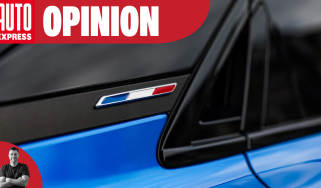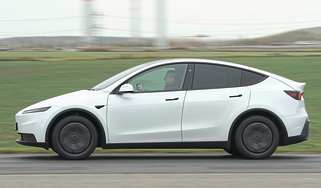Volkswagen CrossBlue Concept review
We get behind the wheel of the Volkswagen CrossBlue SUV concept, which previews the next Tiguan
You can’t glean too much about how a finished car will drive from taking a spin in a concept. However, the CrossBlue proves the flexibility of the MQB platform, and how its economies of scale will allow a big SUV to go on sale here. Although the VW is a large car, it looks good, and hints that the next Tiguan will have a lot more personality. Its neat tech features will make production, too, aimed at boosting appeal to a new generation of buyers.
Volkswagen ushered in 2013 by unveiling the CrossBlue Concept at January’s Detroit Motor Show. Initially, there were no plans to bring the big SUV to Europe – but all that’s changed. We’ve been given a chance to drive the concept and glimpse what’s in store for the production model, due in 2016.
When the MQB platform was announced, VW said that it would underpin all cars from the Polo to the Passat. However, the CrossBlue is designed to show the platform’s maximum dimensions. It measures 4,987mm long, 2,015mm wide and 1,733mm high, making it 12mm shorter, 58mm narrower and 102mm lower than the new Range Rover.
But despite being bigger than a Touareg, the production car will slot between that model and the all-new Tiguan, due in 2015. Under the bonnet is the same 2.0-litre TDI engine as in the new Golf GTD. It has the same six-speed DSG gearbox, too, supplemented by a 40kW e-motor.
Used - available now

2019 Volkswagen
Tiguan
47,457 milesManualDiesel2.0L
Cash £19,050
2020 Volkswagen
Tiguan
48,951 milesAutomaticDiesel2.0L
Cash £18,550
2023 Volkswagen
Tiguan
52,000 milesAutomaticPetrol1.5L
Cash £22,995
2023 Volkswagen
Tiguan
18,715 milesAutomaticDiesel2.0L
Cash £27,394A second, 85kW motor, sourced from the E-Golf, sits on the back axle. This gives four-wheel drive, albeit without a propshaft. The transmission tunnel is instead filled with lithium-ion batteries, again borrowed from the electric Golf.
Although the concept is driveable, it’s limited to 20mph and is far from production-ready. However, you do get a good idea of the excellent visibility available from the driver’s seat, which allows you to manoeuvre what is a pretty big car with real ease.
The TFT instruments and new gear selector are likely to appear in production form, too, with the former giving a clear display that switches between blue for Eco or red for Sport mode. You can select different modes using touch-sensitive buttons below the air-conditioning controls.
The cabin is a major step on from VW’s current range of SUVs, and provided the production car can replicate its quality, it should lead the class. The concept sticks in electric mode most of the time, with VW’s claim of 21 miles’ all-electric range seeming achievable. When the battery runs down, the diesel engine can recharge it in 15 minutes.
Inside, six seats provide plenty of space. Even with the third row in place, there’s still a 360-litre boot – that’s only 20 litres shy of the current Golf’s. The concept’s Sharan-sourced seats are representative of what will be offered in production. Buyers can select from five or seven-seat layouts, too, as well as front or four-wheel drive.
The exterior hints at how VW’s next generation of SUVs will look. The bluff nose, long wheelbase and generous rear overhang provide classy proportions, while the squared-off arches give a distinct Jeep Grand Cherokee flavour.
The look works well in different sizes, as shown by the tiny Taigun concept, and should suit the next Tiguan too. And although the chrome grille is similar to that of the American-spec Passat, nothing seems too outlandish for European tastes. Chunky details picked out in matt aluminium, such as the roof rails, bonnet vents and door mirror finishers, are nicely done as well.


